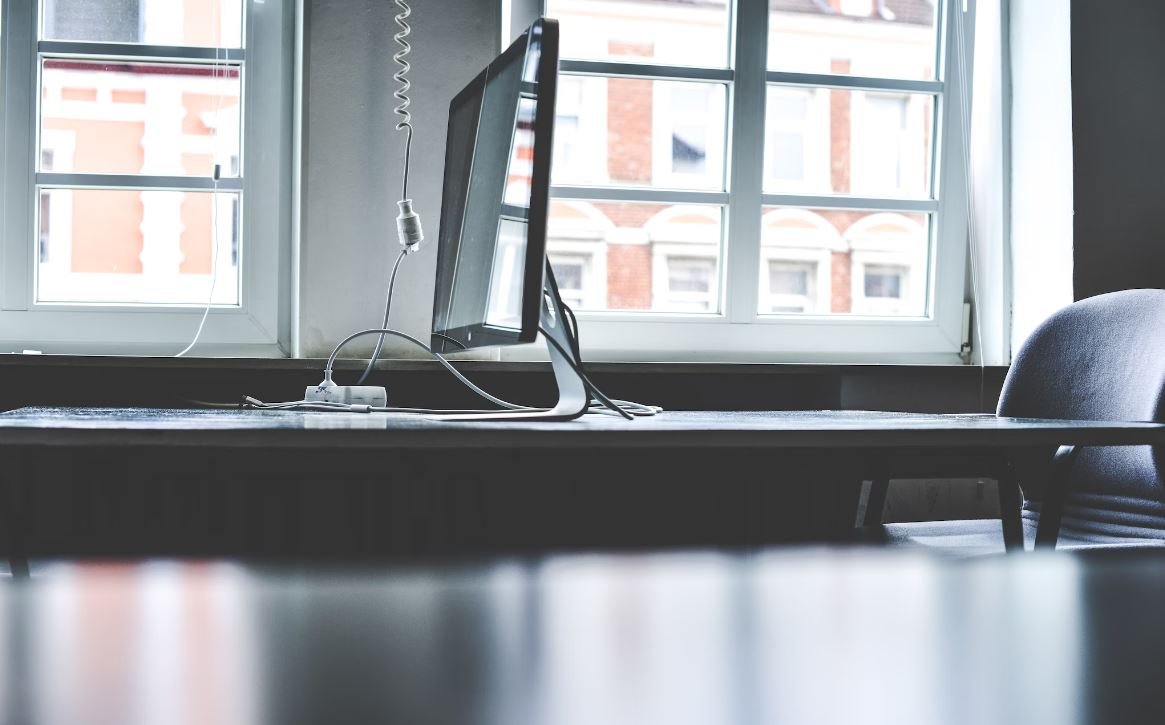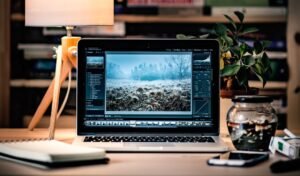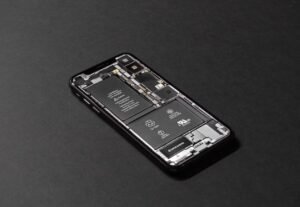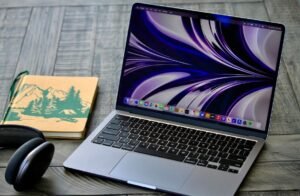Film Equipment
Film equipment plays a crucial role in the production of movies, documentaries, and other forms of visual storytelling. From cameras and lenses to lighting and sound, the right equipment can make a significant difference in the quality and impact of a film. In this article, we will explore the various types of film equipment and their importance in the filmmaking process.
Key Takeaways:
- Film equipment is essential for the production of high-quality movies and documentaries.
- Cameras, lighting, sound, and editing tools are some of the key equipment used in filmmaking.
- The right equipment can enhance the storytelling and visual experience for the audience.
- Investing in quality film equipment can yield better production values and improved results.
Cameras are the most fundamental tool in filmmaking. They capture the scenes that form the basis of the film’s visual narrative. There are several types of cameras available, including digital cinema cameras, DSLRs, and mirrorless cameras, each with its own unique features and capabilities. *The development of digital technology revolutionized the film industry, enabling filmmakers to shoot high-quality visuals with more flexibility.*
Lenses are critical for achieving the desired look and feel of a film. They allow filmmakers to control the depth of field, focal length, and overall image quality. Different types of lenses, such as prime lenses and zoom lenses, offer various creative possibilities and shooting styles. *The choice of lens can greatly impact the visual aesthetics of a film, contributing to its overall mood and atmosphere.*
| Type of Lens | Advantages | Disadvantages |
|---|---|---|
| Prime Lens | Wide aperture for shallow depth of field. Generally, superior image quality | Fixed focal length limits framing options |
| Zoom Lens | Variable focal length for versatile framing options. Convenient for handheld shooting | Generally, slower maximum aperture. Image quality may not match prime lenses |
Lighting equipment is crucial for creating the desired atmosphere, emphasizing specific elements, and ensuring proper exposure in a film. Lighting setups can range from simple setups with natural light to complex arrangements using artificial lights, such as tungsten lights, LED panels, and strobes. *Careful control of lighting can enhance the mood, highlight important details, and create a visually compelling experience for the viewers.*
Table 1: Commonly Used Film Lighting Equipment
| Lighting Equipment | Advantages | Disadvantages |
|---|---|---|
| Tungsten Lights | Produces warm, natural-looking light. Widely available. | Generates heat, consumes more power. |
| LED Panels | Energy-efficient and adjustable color temperature. Lightweight and portable. | Can be expensive. May produce color inconsistencies at lower price points. |
| Strobes | High-intensity output. Freeze motion effectively. | Requires synchronization with camera shutter. |
Sound equipment is crucial for capturing high-quality audio in films. This includes microphones, recorders, mixers, and headphones. Good sound recording is essential for clear dialogue, immersive sound effects, and synchronized music. *Poor sound quality can greatly impact the overall viewing experience and take away from the storytelling.*
- Microphones come in various types, including shotgun, lavalier, and handheld, each suitable for different recording situations.
- Recorders are used to capture and store audio during a film shoot.
- Mixers are used to control and adjust multiple audio signals.
- Headphones allow filmmakers to monitor audio quality during production.
Table 2: Common Types of Film Microphones
| Microphone Type | Best for |
|---|---|
| Shotgun Microphone | Distant sound sources, outdoor shooting. |
| Lavalier Microphone | Hands-free audio, interviews, and dialogue. |
| Handheld Microphone | Versatile handheld use, capturing vocals, and sound effects. |
Editing tools are essential for shaping the final film. After shooting, the footage is carefully selected, arranged, and trimmed to create the desired narrative. Software like Adobe Premiere Pro, Final Cut Pro, and DaVinci Resolve are commonly used for video editing. *Editing allows filmmakers to add visual effects, transitions, and audio enhancements, turning raw footage into a cohesive story.*
Table 3: Popular Film Editing Software
| Editing Software | Advantages | Disadvantages |
|---|---|---|
| Adobe Premiere Pro | Wide range of tools and effects. Integrates well with other Adobe software. | Hardware-intensive. Requires a powerful computer. |
| Final Cut Pro | Intuitive interface. Efficient workflow. Optimized for Mac users. | Available only for macOS. Limited compatibility with other platforms. |
| DaVinci Resolve | Advanced color grading tools. Suitable for high-end post-production. | Steeper learning curve. Requires a dedicated GPU for optimal performance. |
In summary, film equipment encompasses cameras, lenses, lighting, sound, and editing tools, all of which are crucial for the production of high-quality films. Investing in quality equipment can significantly enhance the storytelling and visual experience for the audience. By choosing the right equipment and mastering its usage, filmmakers can bring their creative vision to life and deliver captivating cinematic experiences.

Common Misconceptions
1. Film Equipment is Only for Professionals
One common misconception people have about film equipment is that it is only meant for professionals in the industry. However, this is not true. There is a wide range of film equipment available that can be used by enthusiasts, beginners, and even amateurs who are passionate about creating videos or films.
- Many film equipment retailers offer affordable options for hobbyists.
- With the advancement of technology, amateur filmmakers can achieve professional-looking results.
- Using professional film equipment can elevate the quality of your work, regardless of your experience level.
2. Expensive Film Equipment Guarantees Better Results
Another misconception is that investing in expensive film equipment will automatically result in better-quality videos or films. While high-end gear can certainly enhance your work, it is not the sole determinant of success.
- Skills, creativity, and storytelling are crucial, regardless of the equipment’s cost.
- Understanding the principles of cinematography is more important than the price tag of your equipment.
- Many successful filmmakers have created exceptional work using affordable gear.
3. Film Equipment Is Only for Cinematic Productions
Some people believe that film equipment is solely designed for creating cinematic masterpieces. Although film gear is commonly used in the movie industry, it can also be utilized for various other purposes, including documentaries, event coverage, corporate videos, and even personal projects.
- Film equipment enables a wide range of visual storytelling possibilities.
- Documentaries often utilize film equipment to capture engaging and captivating footage.
- High-quality gear can enhance the professionalism and impact of corporate videos.
4. Film Equipment Has No Role in Smartphone Video Production
Some individuals believe that film equipment is irrelevant when it comes to smartphone video production. However, this is a misconception as numerous accessories and attachments are available for smartphones, allowing users to enhance their video production capabilities.
- Smartphone gimbals and stabilizers can significantly improve the stability of your videos.
- External microphones can enhance audio quality, critical for professional-level videos.
- Additional lenses can expand the creative possibilities and improve image quality.
5. Film Equipment Makes Post-production Irrelevant
Lastly, some individuals mistakenly believe that utilizing film equipment eliminates the need for post-production work. However, post-production, including editing, color grading, and sound design, remains an essential part of the filmmaking process, regardless of the equipment used during filming.
- Post-production enhances the overall visual and auditory experience of a film or video.
- Editing can help refine the story and structure, making it more coherent and engaging.
- Color grading and sound design contribute to the mood and emotion of the final product.

Film Equipment: The Evolution of Cameras
As technology advances, so does the film industry. Over the years, cameras have significantly evolved, allowing filmmakers to capture stunning visuals and tell compelling stories. The following table highlights the evolution of cameras used in filmmaking:
| Decade | Camera | Key Features |
|---|---|---|
| 1920s | Bell & Howell Standard | Hand-cranked, 35mm film, non-reflex viewfinder |
| 1940s | Arriflex 35 | Reflex viewfinder, 35mm film, lightweight |
| 1970s | ARRIFLEX 16SR | 16mm film, interchangeable lenses, crystal-controlled motor |
| 1990s | Panasonic AG-DVX100 | MiniDV tape format, progressive scan, variable frame rates |
| 2000s | RED ONE | 4K resolution, modular design, RAW recording |
| 2010s | Blackmagic Pocket Cinema Camera 4K | 4K DCI and 1080p recording, 13 stops of dynamic range |
Film Equipment: Sound Recording Devices
Sound plays a crucial role in filmmaking, enhancing the overall viewer experience. Sound recording devices have come a long way from the early days of synchronized sound. Let’s explore the evolution of sound recording devices:
| Decade | Device | Key Features |
|---|---|---|
| 1930s | Movietone | Variable-density optical recording, optical soundtrack |
| 1950s | Magnetic Tape Recorder | Wire or tape-based, improved audio quality |
| 1970s | Nagra IV-S | Portable, solid-state transistors, multiple microphone inputs |
| 2000s | Zaxcom Deva | Digital recording, timecode synchronization, wireless transmission |
| 2010s | Sound Devices 633 | Multitrack recording, high-resolution audio, intuitive interface |
Film Equipment: Lighting Fixtures
Lighting plays a vital role in cinematography, setting the mood and enhancing the visual storytelling. Here are some commonly used lighting fixtures in the film industry:
| Fixture | Usage | Special Features |
|---|---|---|
| Fresnel | Key or fill light for general illumination | Focusable, adjustable beam size |
| LED Panels | Soft, diffused lighting sources | Energy-efficient, customizable color temperature |
| HMI Lights | Powerful daylight-balanced lighting | High output, great for outdoor shoots |
| Kinoflo | Soft, controllable fluorescent lighting | Cool to touch, accurate color representation |
Film Equipment: Camera Lenses
Camera lenses contribute greatly to the aesthetics of a film, enabling filmmakers to creatively manipulate depth of field and focal length. Here are some popular camera lenses used in the industry:
| Lens | Focal Length | Usage |
|---|---|---|
| Canon EF 24-70mm f/2.8L II USM | 24-70mm | Versatile for various shooting scenarios |
| Zeiss Otus 85mm f/1.4 | 85mm | Portraiture, low-light environments |
| Super 16mm Zoom | 7-80mm | Documentaries, run-and-gun style filming |
Film Equipment: Editing Software
The post-production phase is where the magic happens, and editing software is the tool that brings everything together. The following table showcases some widely used editing software in the industry:
| Software | Main Features |
|---|---|
| Adobe Premiere Pro | Robust timeline editing, extensive effects library |
| Avid Media Composer | Advanced audio editing, shared project collaboration |
| Final Cut Pro X | Intuitive interface, seamless integration with Apple ecosystem |
Film Equipment: Film Stock Types
While digital filmmaking has become prevalent, some filmmakers still embrace the unique characteristics provided by film stock. Here’s a table presenting different types of film stock:
| Stock Type | Characteristics |
|---|---|
| Kodak Vision3 500T | High contrast, fine grain, enhanced color reproduction |
| Fujifilm Eterna 500T | Neutral color, excellent skin tone rendition |
| Agfa Vista 200 | Rich, vibrant colors, affordable price |
Film Equipment: Camera Stabilization
To achieve smooth and steady shots, camera stabilization systems are essential. Let’s explore different camera stabilization options available:
| Stabilization Type | Key Features |
|---|---|
| Tripods | Sturdy support, adjustable height |
| Gimbals | 3-axis stabilization, fluid movement |
| Steadicams | Counterbalanced weights, smooth camera movement |
| Drones | Aerial shots, dynamic perspectives |
Film Equipment: Special Effects Tools
Special effects are a fascinating aspect of filmmaking, allowing filmmakers to create astonishing visuals. The table below lists some notable special effects tools:
| Tool | Effect | Usage |
|---|---|---|
| Green Screen | Mattes, background replacement | To composite subjects into different backgrounds |
| Miniature Models | Building destruction, scale manipulation | To create realistic scenes on a smaller scale |
| Pyrotechnics | Explosions, fire effects | To simulate dangerous or explosive situations |
Film Equipment: Film Projection Formats
Finally, film projection formats allow filmmakers to showcase their work on the big screen. The following table presents different film projection formats:
| Format | Resolution | Aspect Ratio |
|---|---|---|
| 35mm | 2K | 1.37:1 (Academy) |
| 70mm IMAX | 8K | 1.43:1 |
| Digital Cinema Package (DCP) | 4K | Varies (adjustable for different aspect ratios) |
From cameras to sound recording devices, lighting fixtures to editing software, and everything in between, the world of film equipment is vast and ever-evolving. Each piece of equipment serves a unique purpose, enabling filmmakers to bring their visions to life on the silver screen. By embracing technological advancements, artists continue to push boundaries, captivating audiences with their storytelling prowess and visual creativity.
Frequently Asked Questions
What is film equipment?
Film equipment refers to the tools and devices used in the filmmaking process. This can include cameras, lenses, lighting equipment, sound recording devices, tripods, and other accessories necessary for capturing and creating high-quality visual and audio content for films.
What are the different types of cameras used in filmmaking?
There are several types of cameras used in filmmaking. These include digital cinema cameras, DSLRs, mirrorless cameras, and film cameras. Each type of camera has its own features and benefits, and the choice depends on the specific requirements of the production.
What are some essential film lighting equipment?
Some essential film lighting equipment includes different types of lights such as key lights, fill lights, and backlighting. Other equipment includes light stands, diffusers, reflectors, and gels to control and shape the light. This allows filmmakers to achieve desired lighting effects and create the right atmosphere for their scenes.
What is the purpose of sound recording devices in filmmaking?
Sound recording devices capture high-quality audio during the filmmaking process. They ensure that dialogue, sound effects, and background noise are recorded clearly and accurately. This is crucial for creating immersive and engaging films with seamless audio integration.
When should I use a tripod in filmmaking?
Using a tripod is recommended when you need to keep the camera steady and prevent shaky footage. It helps create smooth shots, especially in situations where you need to maintain a stable frame, capture time-lapses, or shoot longer scenes without fatigue. Tripods also provide versatility and enable precise framing and composition.
What are some common camera lenses used in filmmaking?
Common camera lenses used in filmmaking include wide-angle lenses, standard lenses, and telephoto lenses. Wide-angle lenses capture a broader field of view, standard lenses are versatile for general shooting, and telephoto lenses focus on distant subjects. Each lens type offers distinct characteristics, allowing filmmakers to achieve specific visual effects and perspectives.
What is a boom pole in film production?
A boom pole is a long, extendable pole used in film production to hold a microphone closer to the actors or target audio source without it appearing in the camera frame. This allows for better audio recording quality, as the microphone can be positioned closer to capture more focused and clear sound.
What is the purpose of a clapperboard in filmmaking?
A clapperboard, also known as a slate, is a device used to synchronize visual and audio components during the filming process. It consists of a hinged board with information about the scene written on it. By clapping the board together and capturing the visual and audio cues, the clapperboard makes it easier to match the audio recordings with the corresponding footage during editing.
Why is a green screen used in filmmaking?
A green screen, or chroma key, is used in filmmaking to replace the background during post-production. By shooting a scene in front of a green screen, filmmakers can digitally replace the green background with any desired image or footage. This technique is commonly used for creating special effects, virtual backgrounds, and placing actors in different environments.
What are some important film equipment accessories?
Some important film equipment accessories include camera bags, memory cards, batteries, external monitors, follow-focus systems, microphones, and stabilizers. These accessories provide additional functionality and convenience when using film equipment and contribute to the overall quality and smooth operation of the filmmaking process.




